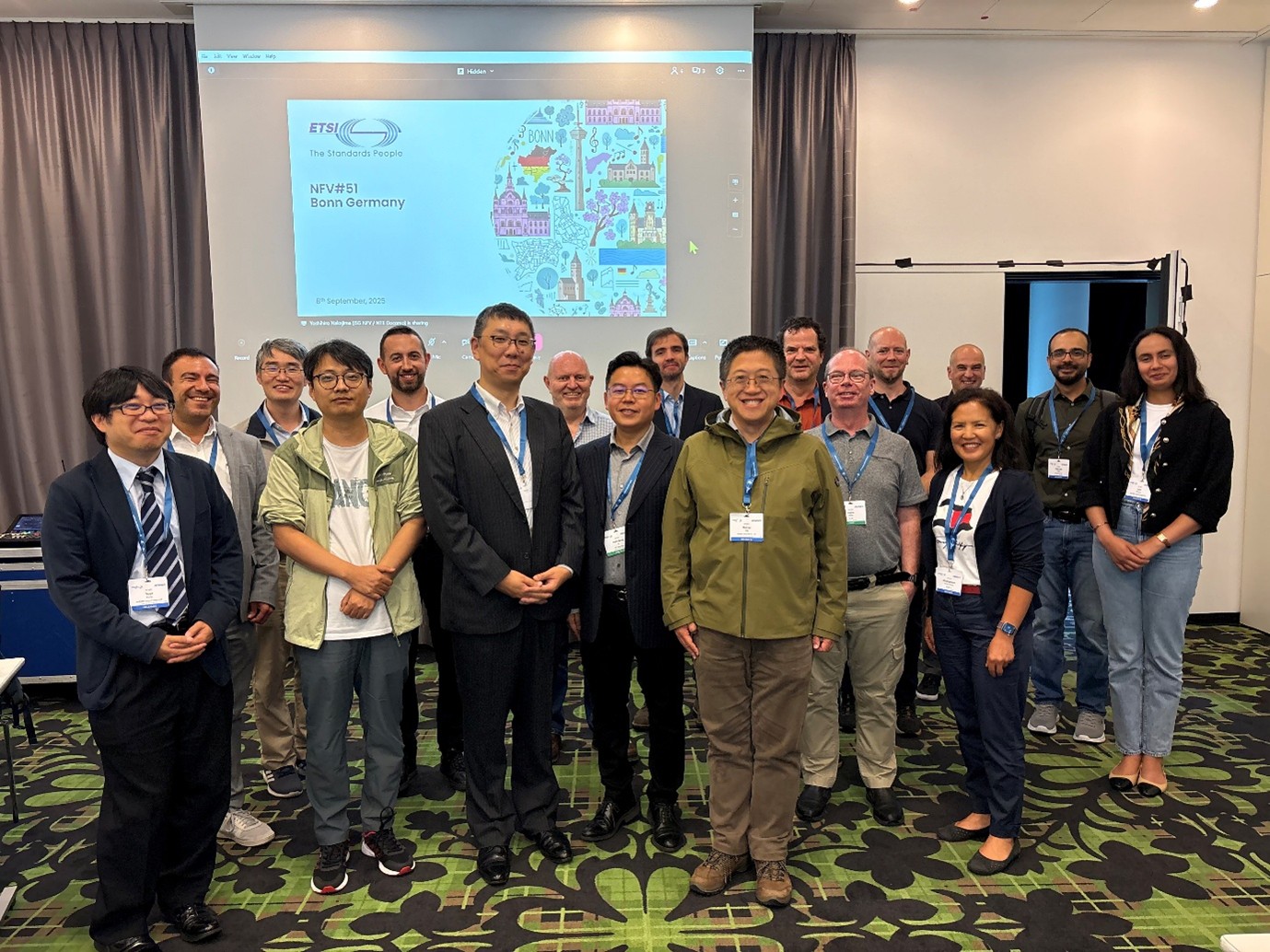ETSI NFV Community Gathers in Bonn for NFV#51
The ETSI Industry Specification Group for Network Functions Virtualisation (ISG NFV) held its 51st plenary meeting (NFV#51) from 08 to 12 September 2025, in Bonn, Germany, hosted by Huawei at a beautiful venue along the Rhine River. A significant portion of the plenary was dedicated to updates from the various Working Groups (WGs), the engines of NFV's technical development.
- WG EVE: Steady progress at NFV#51, advancing four active work items. EVE024 introduced new use cases for real-time VNFs, while EVE025 addressed key issues related to extended Berkeley Packet Filter (eBPF), evaluation, and recommendation. EVE026 work focused on In-Network Computing applications and potential solutions, and EVE027 added model-related use cases.
- WG IFA: For Release 5 work advanced in areas such as FEAT33 (Physical Infrastructure Management) and FEAT20 (Automation) in edition 541. For Release 6, notable progress was achieved on Telco Cloud Application (TCA)/TCA Component abstraction, descriptor definitions, and orchestration, while carefully avoiding overlap with existing Release 5 NFV specifications. The group also pursued forward-looking studies, including the Release 6 “GitOps in NFV” initiative, and initiated Release 7 brainstorming on Agentic Telco Cloud Management and AI Agent platforms.
- WG SEC: Advancing work on SEC021 and SEC025 with new drafts, while also defining the way forward for SEC023 and SEC024. Several liaison statements were reviewed, including inputs from IETF RATS/LAMPS and ITU-T. Additionally, the WG reviewed the TC CYBER EUSR (Working Group focusing on answering EU Standardisation Requests) draft addressing hypervisor and container controls. In terms of outreach, the group prepared dedicated slides for the ETSI Security Week 2025.
- WG SOL: Key advances were made on FEAT24 (Generic OAM), FEAT33 (Physical Infrastructure Management), TST010 (API conformance test), and SOL008 (OpenAPI). In addition, the group withdrew its proposal for a new STF on OpenAPI generation tools, aligning instead with ETSI CTI (Centre for Testing and Interoperability) developments. Looking ahead, SOL is preparing to transition specifications to Markdown-based document management, with SOL026 identified as a potential first target from NFV#52 onward, marking a step toward modernising documentation practices.
Release 6: The highlights for Release 6 included a discussion on restructuring NFV-IFA documents, to better reflect ongoing developments. The group endorsed creating new documents to cover architecture, requirements, descriptors, packaging, and interfaces for the Telco Cloud. On the technical side, in-depth discussions focused on Telco Cloud orchestration and automation services, TCA application descriptors, and Telco Cloud network management, with the expectation that ed611 will finalise the Telco Cloud architectural framework as the foundation for all future NFV technical work.
Release 7: Regarding the Release 7 timetables, ETSI NFV TSC (Technical Steering Committee) decided that Release 7 feature definition will be from September 2025 to March 2026, the informative phase of ed711 will be from January 2026 to December 2026. The NFV#51 discussions on Release 7 highlighted the vision of a Cloud-native and AI-native Telco Cloud. Two discussion papers described the concept of agentic telco cloud management which aims to embed AI deeply into Telco Cloud design and operations. Both papers emphasised the use of AI Agents and the shift from simply embedding AI tools into the Telco Cloud toward creating an AI-native Telco Cloud, designed with AI at its core to enable self-optimisation, predictive maintenance, dynamic resource allocation, and autonomous operations. Strong links to ongoing work in 3GPP, ETSI ISG ENI, and ETSI ISG ZSM have been also identified.
NFV-Open Session on Telco Cloud-native, and AI-native: On Monday 08 September, an Open Session on this topic took place, where experts in Telco cloud management from Deutsche Telecom, Telefónica, Swisscom, NTT DOCOMO, China Telecommunications and Huawei presented key characteristics of Telco cloud management that support the adoption of a Cloud-native and AI-native paradigm. More information on this event is available at https://www.etsi.org/newsroom/blogs/entry/telco-cloud-native-ai-native-open-session-in-parallel-with-nfv-51.
Vision and Strategic Direction: Yoshihiro Nakajima's "Chair's perspectives" session provided valuable insights into the current state and future direction of ISG NFV. On the topic of closer collaboration with other ETSI ISGs two documents have been discussed with the ISG:
- A draft of ISG NFV input for the BOARD-OCG Brainstorming on Future Network Standards: The draft highlights the evolution of NFV toward a Telco Cloud framework, moving from cloud-native to AI-native networks with greater automation and declarative, intent-driven operations. It emphasised key characteristics such as virtualisation, containerisation, AI/ML, and distributed infrastructure to support future network use cases. The approach calls for simplification, flexibility, and collaboration with other ETSI NFV ISGs to ensure sustainable, interoperable standards for future networking.
- A draft ToR proposal for a new structure in BOARD-OCG Brainstorming on Future Network Standards: The draft Terms of Reference propose establishing ETSI TC NET to define architectures, specifications, and frameworks for intelligent, AI-driven, and cloud-native network orchestration and management. Its objectives include developing standardised APIs, data models, and security frameworks, while ensuring sustainability and interoperability across multi-vendor environments. TC NET would collaborate with ETSI Technical Groups, 3GPP, GSMA, ITU-T, open-source communities, and industry stakeholders to drive future network innovation.
Furthermore, GSMA VENUS Work Item status was reported. The GSMA VENUS Work Item was introduced to assess NFV standardisation options, gaps, and industry needs. It will deliver a white paper with analysis, recommendations, and a call for action to improve alignment in network softwarisation. The draft is targeted for end of 2025, with publication planned at MWC 2026. Bi-weekly meetings are ongoing, and contributions from the ETSI NFV community are welcomed.
A presentation with updates on ISG NFV external cooperations highlighted the importance of collaboration with SDOs and open-source projects for harmonisation, interoperability, and visibility.
The NFV#51 plenary meeting served as a crucial platform for advancing the state of telco cloud-native and AI-native. Through focused discussions, collaborative efforts, and a clear vision for the future, the NFV community continues to drive innovation and shape the evolution of telecommunications networks.


